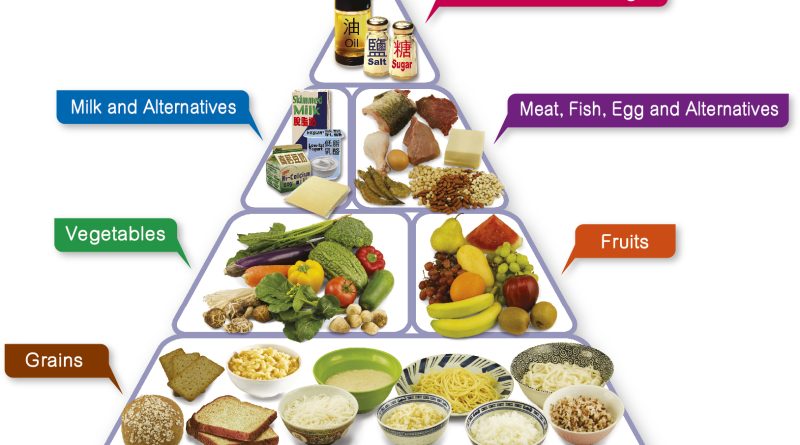The Food Pyramid
The food pyramid is a chart. It shows the different groups of foods. This chart also tells us how much of each group of food we should eat. The first group is the base or the bottom of the pyramid. There are bread, cereals, noodles, potatoes etc. in this group. We should eat plenty of these foods. The next group shows the foods which we should eat regularly. There are fresh fruits and vegetables in this group. As we go up the pyramid, we find dairy products (milk, cheese, and yoghurt), meat, fish, beans, nuts and eggs. These foods are important for health, but we do not need too much of them. So, we should eat them moderately. There are some foods which we should eat very little. These foods are at the top of the food pyramids. These foods are fats, oils, sweets, etc. Foods are very important for our life. All types of foods are not equally necessary for us. So, we should follow the food pyramid for a good health.
Or,
A Food Pyramid is a representation of the optimal number of servings to be eaten each day from each of the basic food groups. Balanced diet is a key to stay healthy. Follow the “Healthy Eating Food Pyramid” guide as you pick your food. Grains should be taken as the most. Eat more fruit and vegetables. Have a moderate amount of meat, fish, egg, milk and their alternatives. Reduce fat/ oil, salt and sugar. Trim fat from meat before cooking. Cook with low-fat methods such as steaming, stewing, simmering, boiling, scalding or cooking with non-stick frying pans. Also reduce the use of frying and deep-frying. These can help us achieve a balanced diet and promote health. Since different foods have different nutritional values, it is not possible to obtain all the nutrients we need from a single food. According to the Healthy Eating Food Pyramid, we have to eat a variety of foods among all food groups as well as within each group in order to get different nutrients and meet our daily needs. Neither eating too much nor too little is good for our health. Every day, we need a specific amount of nutrients to maintain optimal health. If we do not eat enough, malnutrition or symptoms of nutrient deficiency are likely to develop. In contrast, excessive intake can result in over-nutrition and obesity. Therefore, we have to eat the right amount of food to stay healthy.

